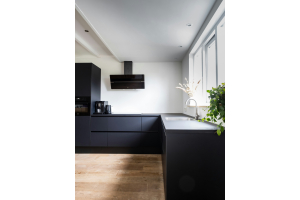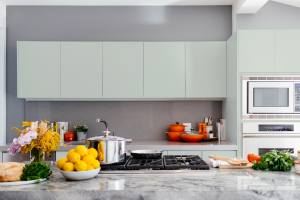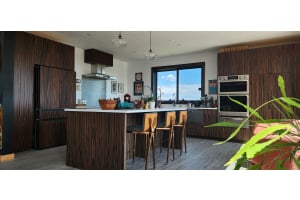Fluted paneling is a versatile wall covering that is typically made from wood, engineered wood fibers, polyvinyl chloride (PVC), or metal. It is built with linear concave grooves or spaces called flutes that create a three-dimensional aesthetic.
The flutes are carved in uniform or varying widths from one end of the panel to the other to give an undulating sense of movement. Fluted panels are a popular and playful decorative touch that often appears in bedrooms and living areas.
The Options Are Nearly Endless
Covering all or a section of a wall or ceiling is a timeless decorating approach that can break up the monotony of plain walls and bring new life to any room in a home or commercial space. The paneling can be hung horizontally, vertically, or diagonally, depending on the space where it is being installed and the desired result.
For example, if the panels are hung on a wall with the grooves facing vertically, it will make the walls appear taller and the room more spacious. This is an easy trick to apply to restaurants with limited room to give the illusion of extra space.
Some other ways fluted panels can be used to bring texture, depth, and visual interest to a room include:
- Feature or accent walls: Giving a wall in a room a different design than the others creates an eye-catching centerpiece for the home.
- Room dividers: If you have a half counter or kitchen island that serves as a divider between rooms, consider covering the lower area under the counter with fluted paneling to provide a unique appearance.
- Ceiling accents: The potential of a ceiling to transform a room is often overlooked. Fluted panels can cover all or a portion of a room’s ceiling to add character and make a statement that highlights the creative interior design of a space.
- Column covers: Fluting a column is a design trick that gives the pillar more appeal. The number of grooves on columns in ancient Greek and Roman architecture ranged between twenty to twenty-four, but you are free to use paneling with however many grooves you want.
- Furniture: Add fluted panels to the side of a table or desk, the back of a dresser, the front of cabinets, or any other flat surface that needs some pizzazz.
As you take a closer look at fluted paneling, you’ll discover that they come with grooves in a variety of widths, depths, and orientations. In addition, you can leave the panels in their natural state or opt for a different color or texture to truly personalize the effect they provide.
Other Benefits of Fluted Panels
Fluted panels are made from an assortment of materials, including wood, metal, or plastic by using specialized tools and cutting techniques to create repetitive patterns in vertical or horizontal directions. Because they come in such a wide variety of materials, it is easy to find reeded or fluted panels that suit your budget.
Some of these materials are more eco-friendly than traditional materials and are also resistant to damage from water, termites, and mold–making them a durable and practical design choice. Fluted paneling can also act as an insulator to keep your space quiet and less susceptible to changes in temperature.
A Final Look
Fluted wall panels create a stunning textured effect that can bring sophistication and elegance in an otherwise ordinary room. These panels are a blend of functionality and timeless high style. They can elevate the aesthetic of your home or commercial space and are a proven investment and creative touch that enhances any color scheme or design theme.
Visit 27estore for more ideas on how to use fluted panels to bring innovative style to your wall decor. Looking for instructions on how to make fluted wall panels? Don’t miss our recent article!





